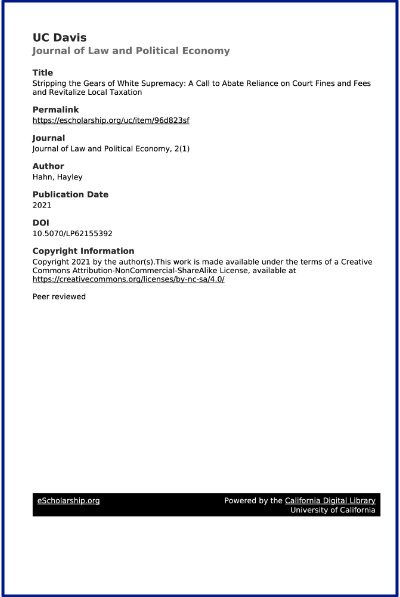By Hayley Hahn
In recent decades, states and municipalities have increasingly relied on court fines and fees to overcome budget shortfalls. Existing literature underscores the varied and adverse impacts of court debt, as well as the disproportionate incidence of such debt on people of color and poor people of all races. Yet, few pieces of scholarship directly link increased imposition of court fines and fees to decreased dependence on traditional progressive taxes. This article aims to fill the gap. Using the Law and Political Economy (LPE) framework, I argue that increased imposition of court debt derives from heightened antitax sentiment and the erosion of the state and local tax bases. In the process, I contend, the tax and court debt systems reflect and exacerbate racial inequality. I conclude by proposing a conceptual framework to abate reliance on court debt, advancing the LPE mission.
Journal of Law and Political Economy, 2(1) 2021.







